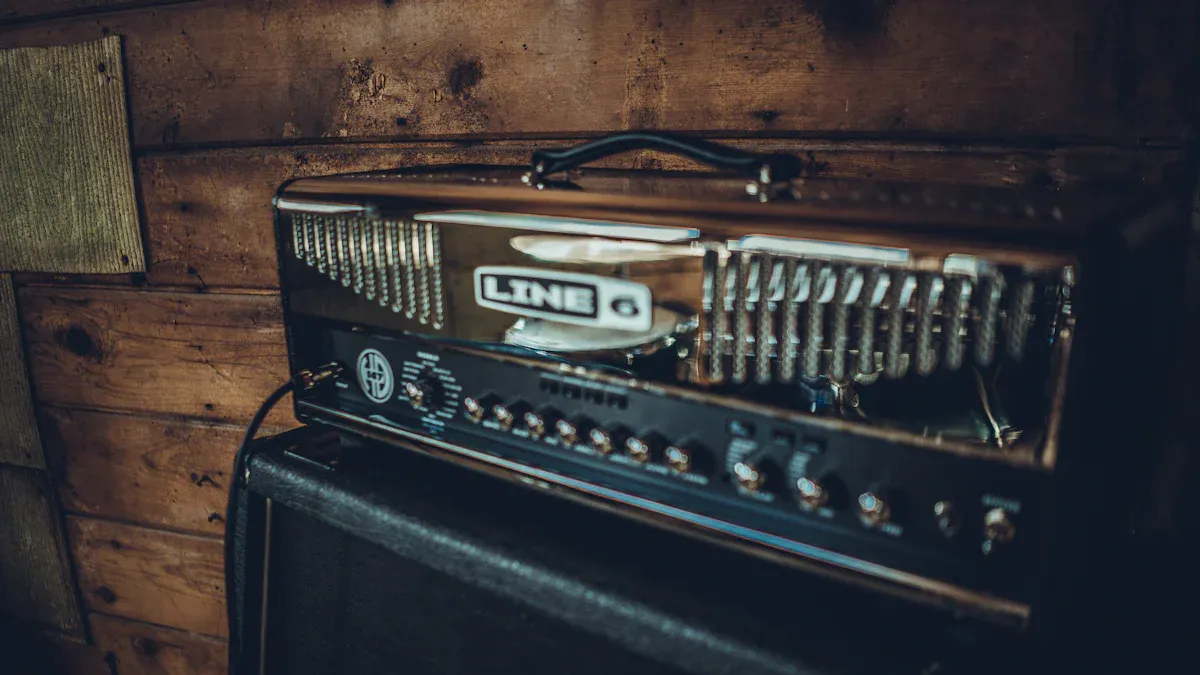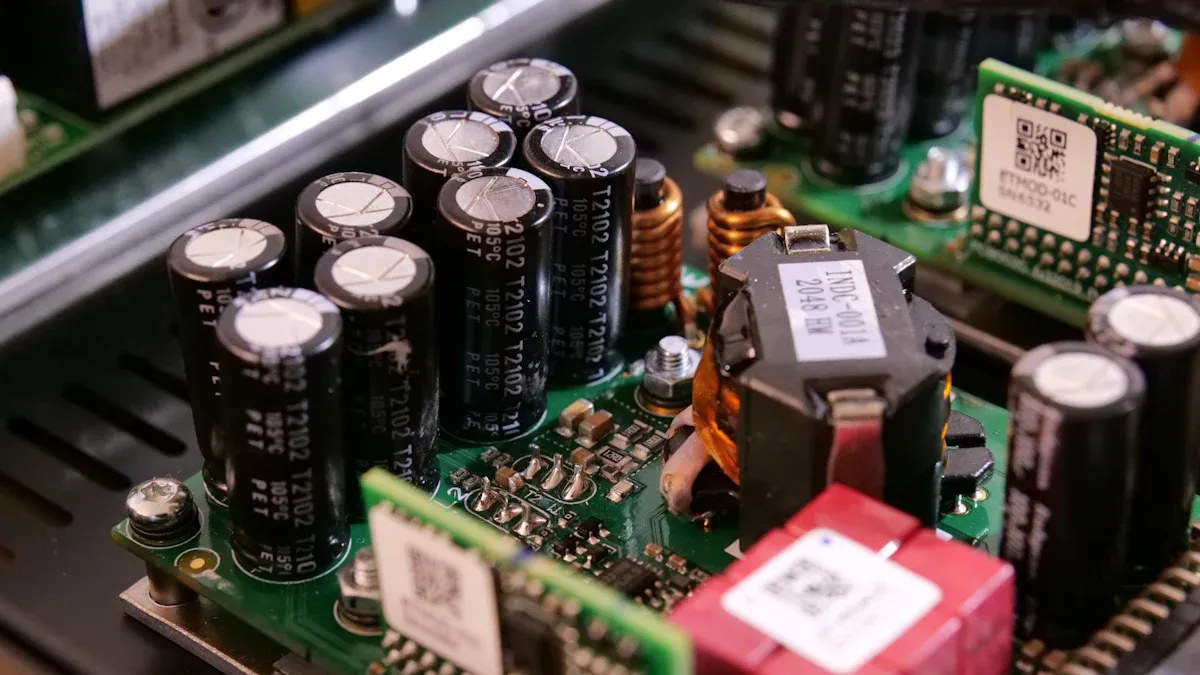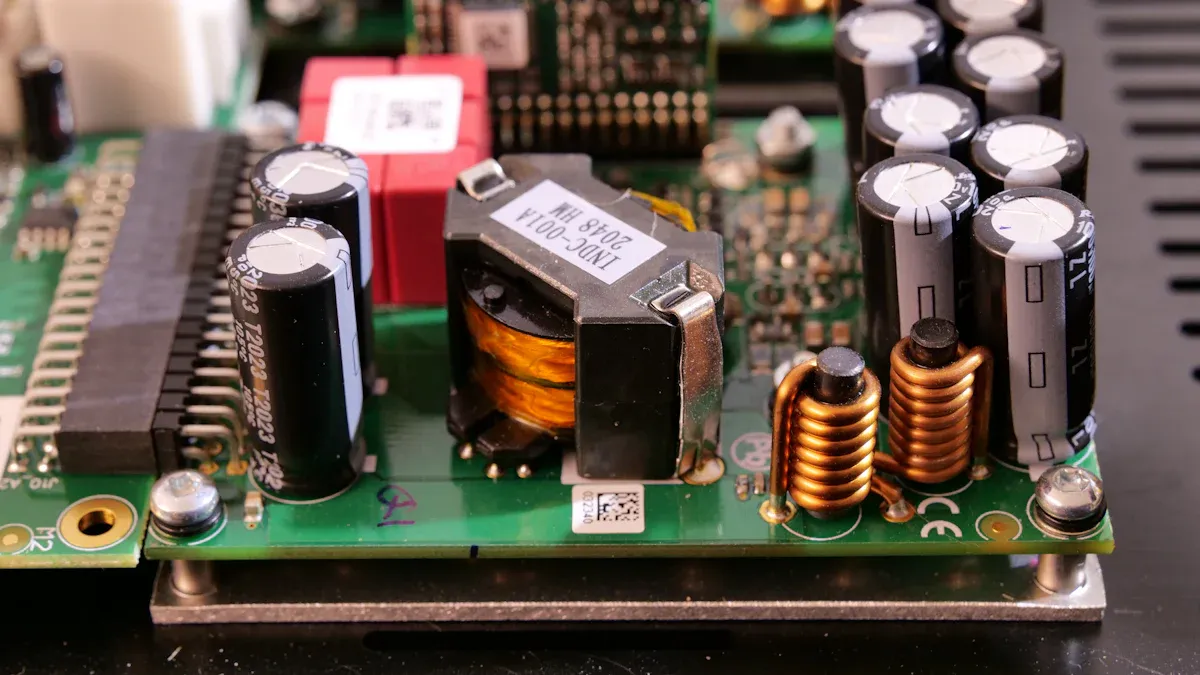TPH3201 vs THS3491: A Tale of Two Amplifiers

Choosing the right amplifier requires understanding its features and performance. The TPH3201 and THS3491 amplifiers differ significantly in aspects such as power, distortion, and noise. For instance:
Power output varies greatly. While 10W is sufficient for standard use, 100W delivers much higher volume.
Total Harmonic Distortion + Noise (THD + N) indicates sound quality. Lower values mean the audio remains truer to the original.
Signal-to-Noise Ratio (SNR) measures background noise. A higher SNR results in clearer sound.
Crosstalk impacts stereo audio. Lower crosstalk, such as -100dB, ensures superior sound quality.
In regions like China, where there is a strong demand for premium amplifiers, these distinctions are crucial. Understanding your requirements is essential for selecting the right amplifier, especially in industries that prioritize precision and rely on 3PEAK chips from 3peak distributors.
Key Takeaways
Know how much power you need. Pick 10W for normal use or 100W for louder sound.
Less Total Harmonic Distortion + Noise (THD + N) gives better sound. Look for amplifiers with smaller numbers.
Choose amplifiers by Signal-to-Noise Ratio (SNR). Higher SNR means clearer audio.
Think about the purpose. Use TPH3201 for accurate tasks and THS3491 for quick communication or fun.
Technical Specifications
Input and Output Characteristics
An amplifier's input and output features show how well it works. Important factors include:
Gain: This shows how much the amplifier increases a signal. Higher gain makes weak signals stronger.
Linearity: This keeps the output signal matching the input, even if the input changes.
Noise: This measures unwanted sounds in the output. Less noise means clearer sound.
Output Dynamic Range: This is the difference between the smallest and largest useful outputs.
Stability: This stops the amplifier from creating unwanted signals by itself.
The TPH3201 is great at keeping signals steady and stable. This makes it perfect for precise tasks. The THS3491, however, has a wider range of outputs, making it better for high-quality audio systems.
Bandwidth and Slew Rate
Bandwidth and slew rate show how well an amplifier handles fast signal changes. Bandwidth is the range of frequencies the amplifier can handle. A bigger bandwidth works better with complex signals. Slew rate shows how fast the output changes when the input changes. Faster slew rates copy quick signals more accurately.
The TPH3201 has a medium bandwidth and slew rate. It balances good performance with energy use. The THS3491 has a faster slew rate. This makes it great for tasks like fast communication systems.
Power Supply Requirements
Power needs affect how the amplifier fits into different systems. Both amplifiers work within certain voltage ranges to stay stable. The TPH3201 uses less power, making it good for low-energy tasks. The THS3491 needs more power but supports advanced features.
Picking the right amplifier depends on your power source and energy limits. For portable devices, the TPH3201 saves energy. The THS3491 works best where power is easy to get.
Noise Performance
Noise performance is very important for amplifiers. It affects how clear and accurate the sound is. The TPH3201 and THS3491 have different noise levels, making them good for different uses.
Input-referred voltage noise (en) helps measure noise performance. Great amplifiers often have less than 1 nV/√Hz. The TPH3201 is made for precise tasks. It keeps noise low, so it works well in sensitive jobs. The THS3491 is built for speed. It balances noise with its advanced features.
The input stage design also changes noise levels. Bipolar amplifiers make less voltage noise but more current noise. For example:
Bipolar amps create about 400 fA/√Hz of current noise.
JFET amps, used in some precise designs, make as little as 5 fA/√Hz.
The TPH3201 is designed to lower both voltage and current noise. This makes it great for tasks needing clear signals. The THS3491 has slightly more noise but works better for fast and wide-range tasks.
Tip: Think about noise and other features like speed and range. Pick the amplifier that fits your needs best.
Performance Metrics

Signal Integrity and Distortion
Signal integrity and distortion show how well an amplifier works. These factors tell us if the amplifier keeps signals clear and accurate. The TPH3201 and THS3491 handle this differently.
Harmonic distortion measures unwanted changes in a signal. It is shown in dBc. Lower dBc means better sound quality. Class A amplifiers, like the TPH3201, are great at keeping distortion low. They also keep signals smooth and steady. Class AB amplifiers, such as the THS3491, have more distortion. But they can handle more tasks and work in flexible ways.
Characteristic | Class A Amplifier (TPH3201) | Class AB Amplifier (THS3491) |
|---|---|---|
Output Distortion | Low distortion, high linearity | Higher distortion, lower linearity |
Harmonic distortion can range from -13 dBc to -60 dBc or less. Amplifiers with wide bandwidths, like the THS3491, may have higher distortion. This happens because they work with more frequencies.
Note: If you need clear signals, pick the TPH3201. For tasks needing speed and flexibility, the THS3491 is better.
Stability and Thermal Performance
Stability helps an amplifier work well in different conditions. Thermal performance shows how it handles heat. Both are important for long-lasting use.
The TPH3201 is very stable, making it great for precise jobs. Its design keeps it cool, even when used for a long time. The THS3491 is less stable but has better heat control. It can handle more power without losing performance.
Some amplifiers, like the THS3491, can manage mismatched loads. This makes them good for tasks needing electromagnetic compatibility (EMC).
Frequency Response
Frequency response shows how an amplifier handles different signal ranges. A flat response means the amplifier keeps signals clear and steady.
Metric | Description |
|---|---|
Flatness | Keeps gain steady across frequencies, reducing signal distortion. |
Modulation Performance | Handles RF modulations clearly, important for EMC testing. |
The TPH3201 has a balanced frequency response. It works well for tasks needing accuracy in a small range. The THS3491 handles a wider range of frequencies. This makes it perfect for fast communication and RF tasks.
Tip: Pick your amplifier based on the frequency range you need. For high-speed tasks, the THS3491 is the best choice.
Application Suitability in China and Beyond

Use Cases for the TPH3201
The TPH3201 is great for tasks needing precision and stability. Its low noise makes it perfect for medical tools like ECG machines. These tools need clear signals to work well. In factories, the TPH3201 helps sensors and controllers process signals accurately. Its energy-saving design also fits portable devices like hearing aids and small diagnostic tools.
In China, advanced healthcare needs have boosted the use of TPH3201. The country's focus on smart factories also shows how useful this amplifier is for precise automated systems.
Use Cases for the THS3491
The THS3491 works best in fast and wide-bandwidth tasks. It is excellent for 5G networks, where quick signal processing is key. Its high power makes it great for sound systems in entertainment places and car infotainment systems.
China leads in 5G technology, creating demand for the THS3491. Its ability to handle high-frequency signals matches China's telecom growth. It also supports the electric car industry with its role in automotive electronics.
Industries and Scenarios Where Each Excels
Both amplifiers shine in different areas. The TPH3201 is best for healthcare and factory automation, where precision matters. The THS3491 is ideal for fast communication and entertainment systems.
Aspect | Details |
|---|---|
Expected to grow due to rising consumer electronics demand. | |
Key Industries | Automotive, entertainment, and consumer electronics. |
Major Companies | Samsung, Panasonic, Toshiba, LG Electronics. |
Regional Dominance | Asia Pacific had the largest market share in 2019. |
Worldwide, the THS3491 benefits from 5G network growth, especially in North America and Asia-Pacific. The TPH3201 is popular in IoT uses like smart cities and farming.
Sector | Key Insights |
|---|---|
Power Amplifiers | Growth comes from consumer electronics and 5G, needing top-quality amplifiers. |
IoT Applications | More demand for special amplifiers in healthcare, farming, and smart cities. |
China's tech and manufacturing leadership ensures a strong market for both amplifiers. The TPH3201 helps precision industries, while the THS3491 supports communication and entertainment advancements.
Cost and Value Comparison
Price Points of TPH3201 and THS3491
The TPH3201 and THS3491 have very different prices. The TPH3201 costs less, making it great for smaller budgets. Even though it’s cheaper, it still works well for precise tasks. The THS3491 is more expensive because it has advanced features. These include a wider bandwidth and faster slew rate. For jobs needing quick signal processing, the higher price of the THS3491 is often worth it.
Tip: Think about your budget and needs before choosing an amplifier.
Long-Term Value and Reliability
Reliability is key when looking at long-term value. The TPH3201 is very durable in low-power tasks. Its energy-saving design helps lower running costs over time. The THS3491 uses more power but works well in tough conditions. It stays reliable even in high-performance tasks. Both amplifiers are dependable, but their value depends on how they are used.
Cost-Effectiveness in Different Applications
Cost-effectiveness changes based on the job. The TPH3201 is perfect for medical tools and factory machines. It’s affordable and works well where precision and low noise are needed. The THS3491 is better for telecom and entertainment systems. Its speed and bandwidth make it ideal for these uses. In China, where 5G and car electronics are growing fast, the THS3491 is worth its higher price.
Note: Choose the amplifier that fits your task to get the best value.
The TPH3201 and THS3491 amplifiers serve different purposes. The TPH3201 is great for saving energy and precise tasks. The THS3491 works best for speed and handling wide signals. Picking the right amplifier depends on your needs. Use the TPH3201 for stable and low-noise tasks. Choose the THS3491 for fast communication or entertainment systems.
Tip: Think about your project’s needs, like cost, performance, and power. Matching these will help the amplifier work best for your task.
What is the main difference between the TPH3201 and THS3491 amplifiers?
The TPH3201 is made for accuracy and low noise. It works best in sensitive tasks. The THS3491 is built for speed and wide signals. It’s great for 5G and entertainment systems.
Which amplifier is better for low-power applications?
The TPH3201 is the best choice for low-power tasks. Its design saves energy, making it perfect for portable devices and systems with limited power.
Can the THS3491 handle high-frequency signals effectively?
Yes, the THS3491 is great for high-frequency signals. Its wide bandwidth and fast response make it ideal for RF communication and telecom systems.
Why is noise performance important when choosing an amplifier?
Noise performance affects how clear the signal is. Low noise keeps signals accurate, which is very important for medical tools and precision sensors.
How do I decide which amplifier to use for my project?
Think about what your project needs. For accuracy and steady signals, pick the TPH3201. For speed and wide signals, go with the THS3491. Look at power, noise, and cost to choose the best one.
Tip: Match the amplifier’s features to your project for the best results.
See Also
Comparing STM32F401VCT6 And STR750FV2T6 In Healthcare Innovation
Enhancing Automotive Efficiency With NXP Microcontrollers MC9S12 Series
ARTESYN NPT42-M: Driving Automation In Industrial Applications
The Role Of Advancing Technology In Electronics Quality Assurance
CALL US DIRECTLY
(+86)755-82724686
RM2508,BlockA,JiaheHuaqiangBuilding,ShenNanMiddleRd,Futian District,Shenzhen,518031,CN
www.keepboomingtech.com sales@keepboomingtech.com
